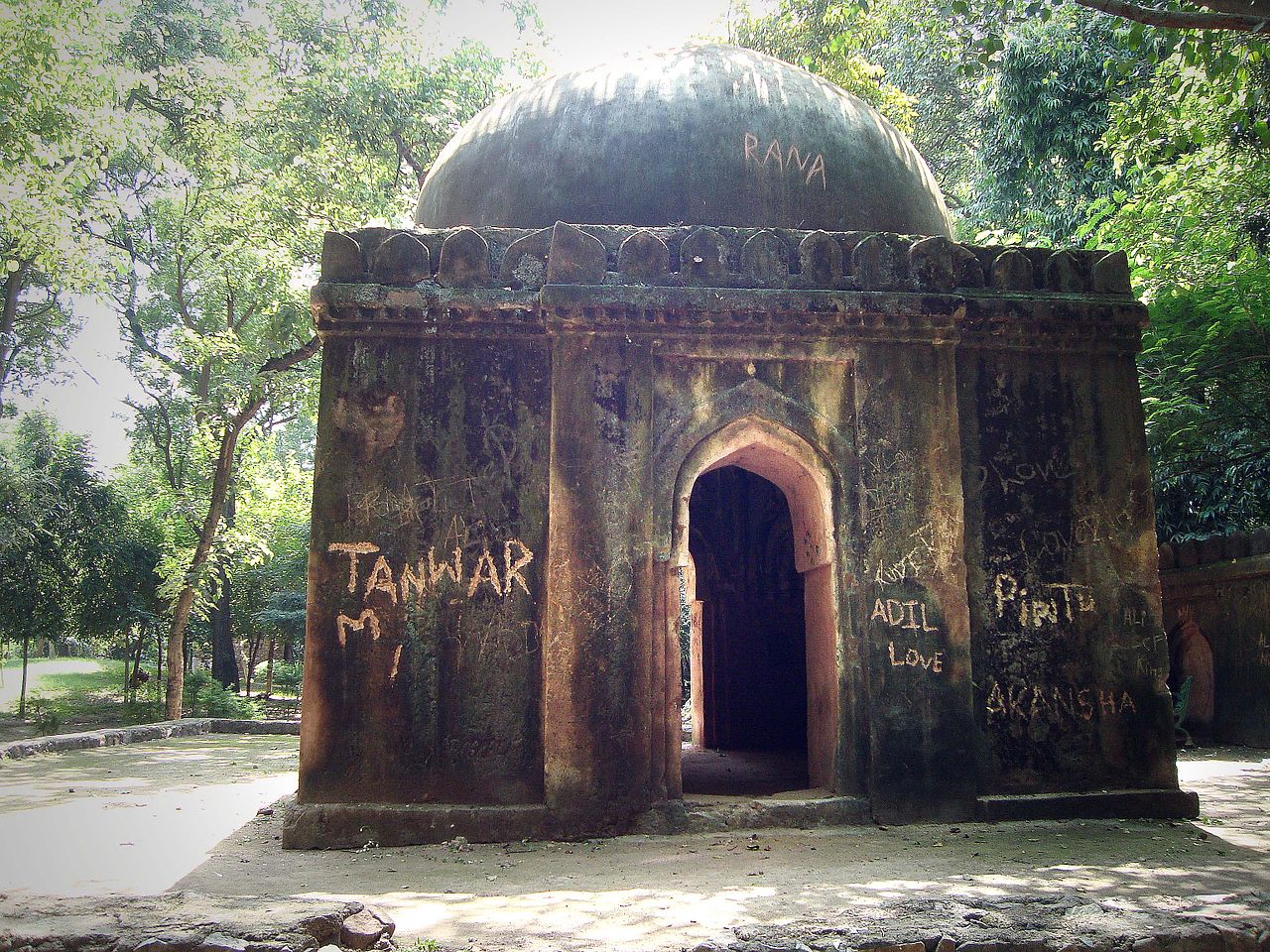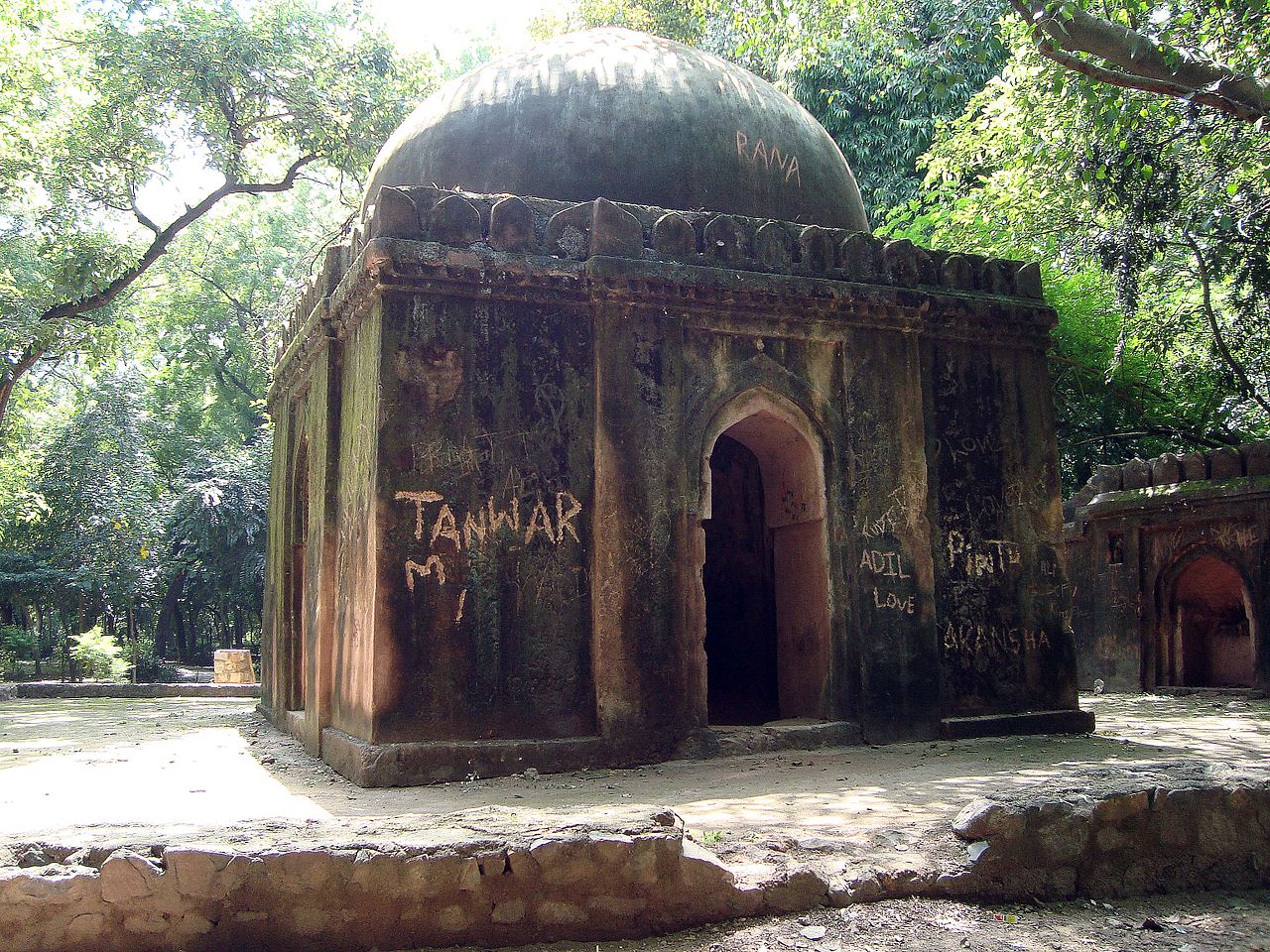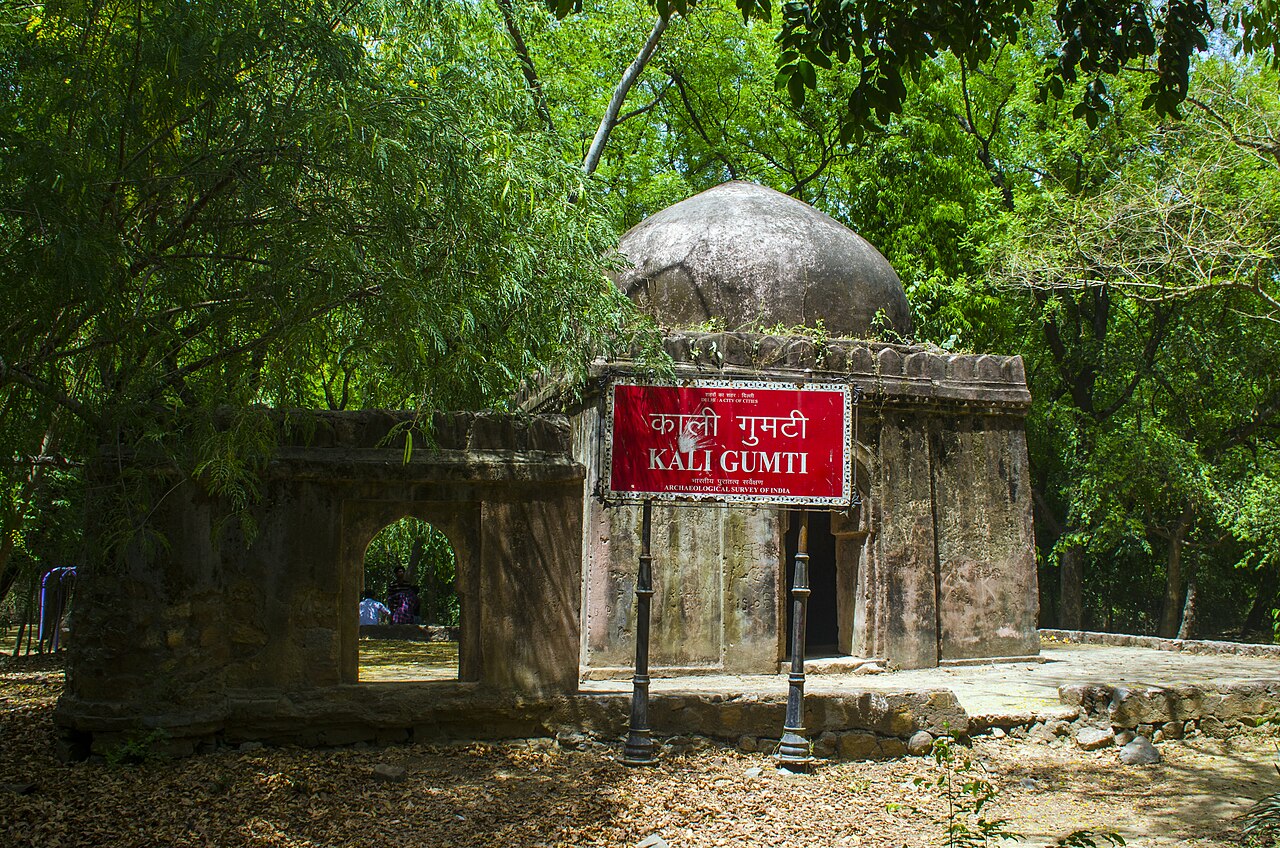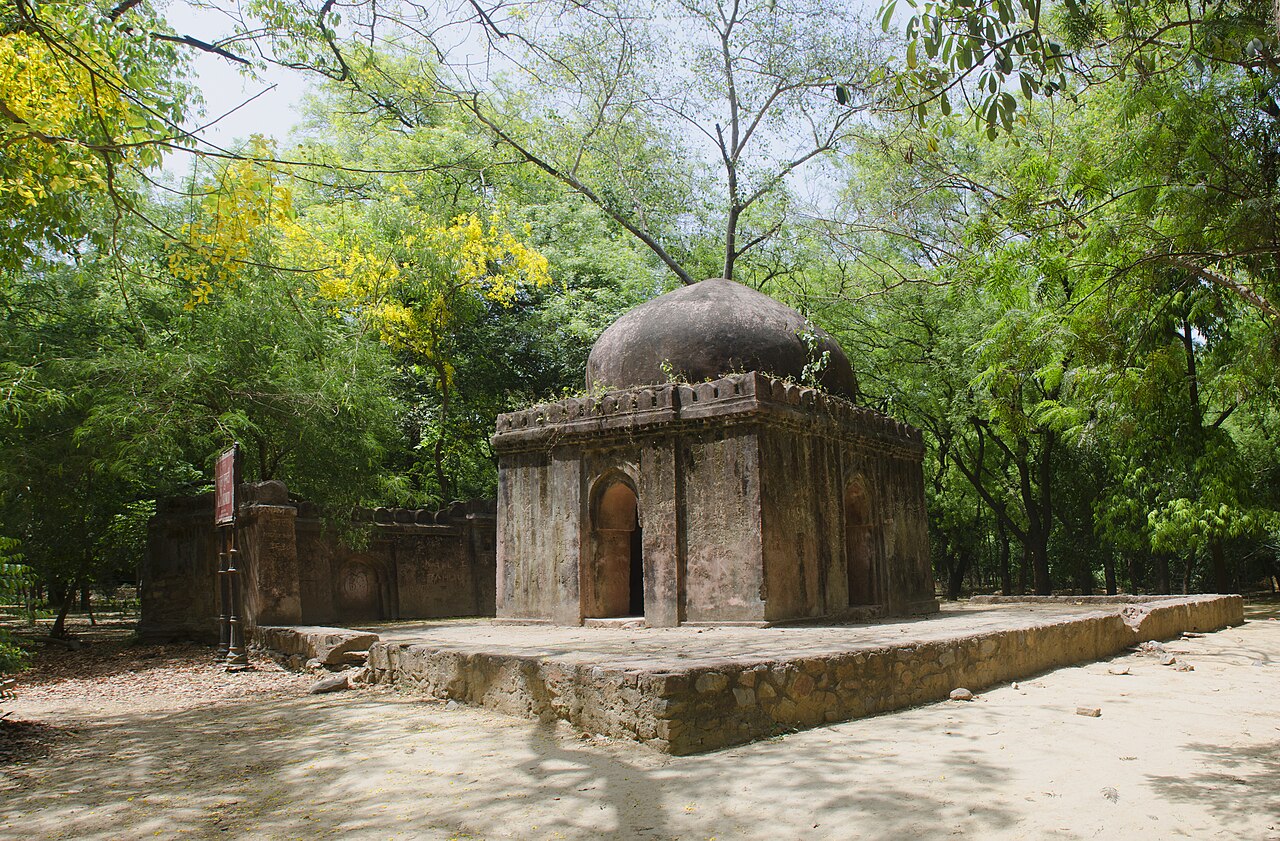



Kali Gumti is a small yet significant 14th-century monument located in Hauz Khas Village, Delhi, India. Believed to have been built during the reign of the Tughlaq dynasty, this structure is characterized by its simplistic architecture and historical significance. Architecture and Features Kali Gumti is a square tomb with a single dome roof, featuring walls constructed from stone and plaster. Its architecture is relatively plain, reflecting the style prevalent in the Tughlaq period, with limited ornamentation. The structure's dark interior gives it a unique ambiance, and it’s often considered a tomb due to its design and layout, although it's not entirely clear who was buried here. Cultural and Historical Significance The monument is thought to have served a religious or funerary purpose and is now often used as a place of worship. Locals and visitors sometimes offer prayers here, attributing it a spiritual aura. It’s located near the Hauz Khas Lake and several other medieval structures, forming part of the larger Hauz Khas complex, which includes the madrasa and the tomb of Feroz Shah Tughlaq. While modest in size, Kali Gumti contributes to the rich historical tapestry of the Hauz Khas area, reflecting Delhi's layered history of Islamic architecture and urban development under the Sultanate. Its name, "Kali Gumti," likely refers to the dark, solemn look of the tomb ("kali" meaning black or dark).